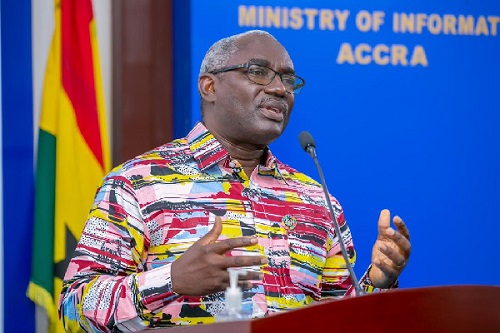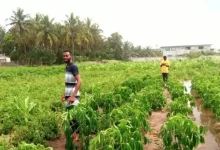
Enrollment of children with disabilities in Ghanaian schools remains “very low,” according to a report by the National Development Planning Commission (NDPC).
The report on the Sustainable Development Goals (SDGs) implementation said the children constituted about 0.2 percent to 0.4 percent of total enrollment of children from kindergarten to Senior High School (SHS) between 2017 and 2021.
“Children with disabilities have lower enrollment rates compared to those without disabilities at all levels of pre-tertiary education, particularly at the SHS and Technical and Vocational Education and Training (TVET) levels.
“In general, children with disabilities are not progressing through the education system, and a large proportion are over-age” the Voluntary National Review (VNR) Report, said.
The document, presented at the UN High-Level Political Forum (HLPF) in July this year, showcased the country’s successes, challenges and lessons learnt in implementing the 2030 Agenda for Sustainable Development.
The Goal 4 of the 17 SDGs on quality education enjoins UN member states to ensure inclusive and equitable education and promote lifelong learning opportunities for all.
The VNR report benchmarked the enrollment of children with disabilities to Ghana’s 2015 Inclusive Education Policy which “promotes an approach that accommodates all children in schools ‘regardless of their physical, intellectual, social, emotional, linguistic or other conditions.’
“It includes children with disabilities; gifted, street and working children; children from remote or nomadic populations; children from linguistic, ethnic, gender or cultural minorities; and children from other disadvantaged or marginalised areas or groups.”
On factors accounting for the low enrolment, the report mentioned inadequate disability-friendly facilities in basic and secondary schools which adversely affects children with disabilities.
It said most regular basic schools lacked handrails, disability-friendly Water, sanitation and hygiene (WASH) facilities, while only eight percent are equipped with ramps.
As a result of this, the report said there were substantial gaps in learning outcomes in reading, writing, and mathematics for pupils with and without disabilities.
“These differences are particularly stark for writing in Ghanaian languages and mathematics. This sub-sector is also severely underfunded.
“In 2015, only 0.6 percent of total recurrent education expenditure was spent on inclusive and special education,” the report said.
From 2017 to 2021, the number of Technical and Vocational Institutes (TVIs) in the country remained the same irrespective of the increasing demand, partly due to funding challenges in providing new TVIs across the country.
However, the enrolment figures in the Ministry of Education /Ghana Education Service TVIs had increased steadily from 54,186 in 2017 to 71,126 in 2021, representing an annual average growth of 7.8 percent.
Yet, between 2017/2018 and 2020/2021, the report said the number of TVIs using disability-friendly facilities appreciated from five per cent to 25 per cent in 2020/2021, partly due to the government’s efforts to make TVET more accessible to persons with disability.
Touching on the findings from a rapid Assessment on treatment of Persons with Disabilities (PWDs), the report said their treatment was mostly influenced by their educational status and economic strength, although social acceptance of PWDs had largely improved over the years due to intensified awareness.
“However, the distance of specialised schools from the homes and communities of PWDs remains a challenge particularly for those in the northern regions,” it said.
BY JONATHAN DONKOR







